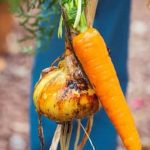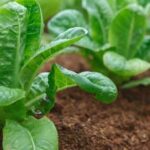Are you interested in producing your own healthy, organic vegetables while also caring for the environment? Sustainable gardening vegetables is a practice that can help you achieve both goals. By using eco-friendly and natural methods, sustainable gardening promotes environmental conservation and reduces your carbon footprint. In this article, we will explore the benefits of sustainable gardening for growing vegetables and provide tips for creating your own sustainable vegetable garden.
Sustainable gardening involves cultivating plants in an environmentally responsible way, without depleting natural resources or causing harm to the ecosystem. This approach emphasizes conserving water, promoting biodiversity, and using organic and natural pest control methods to maintain a healthy garden. When it comes to growing vegetables sustainably, there are several key factors to consider, including choosing the right vegetables, maximizing space, and practicing water conservation.
When planning a sustainable vegetable garden, it’s important to select vegetables that are well-suited to your local climate and soil conditions. Additionally, by incorporating organic and natural pest control techniques such as companion planting and using beneficial insects, you can minimize the need for chemical pesticides.
Furthermore, using techniques like crop rotation and intercropping can help maximize space and promote soil health in a sustainable garden. Stay tuned as we delve into each of these topics in more detail throughout this article on sustainable gardening for growing vegetables.
Benefits of Sustainable Gardening for Growing Vegetables
Sustainable gardening vegetables is a practice that focuses on the long-term health of the environment and aims to minimize the impact of gardening on the ecosystem. When it comes to growing vegetables, sustainable gardening offers numerous benefits that go beyond just providing food for your family.
One of the key benefits of sustainable gardening for growing vegetables is the reduction of chemical inputs. By using organic and natural methods for fertilization and pest control, you can minimize the presence of harmful chemicals in your food. This not only contributes to healthier vegetables but also ensures that you are consuming produce that is free from potentially harmful residues.
In addition, sustainable gardening promotes biodiversity by creating a habitat for beneficial insects and wildlife. This helps to maintain a balanced ecosystem in your garden, leading to healthier plants and improved overall garden resilience. Moreover, sustainable gardening encourages responsible water usage and conservation, which is crucial in regions experiencing water scarcity or during dry periods.
For those concerned about the environmental impact of their actions, sustainable gardening is an important way to reduce carbon footprints and promote healthy ecosystems. By choosing sustainable practices when growing vegetables, individuals can make a positive contribution towards environmental preservation while enjoying an abundant harvest.
| Benefit | Explanation |
|---|---|
| Reduction of chemical inputs | Using organic and natural methods minimizes harmful chemicals in produce. |
| Promotion of biodiversity | Sustainable gardening creates habitats for beneficial insects and wildlife. |
| Water conservation | Encourages responsible water usage and conservation. |
Choosing the Right Vegetables for Sustainable Gardening
When choosing the right vegetables for sustainable gardening, it is important to consider the climate and soil conditions of your region. By selecting vegetables that are well-suited to your specific environment, you can reduce the need for excessive watering, fertilizer, and pest control measures. Additionally, focusing on vegetables that are native or adapted to your area can contribute to a more sustainable and resilient garden.
Consider Climate and Soil Conditions
Before planting any vegetables in your sustainable garden, take the time to research which types are best suited for your specific climate and soil conditions. Some vegetables thrive in cooler temperatures with rich, well-drained soil, while others may require warmer temperatures and sandy soil. By choosing vegetables that naturally thrive in your region, you will be reducing the need for extra resources such as water and fertilizers.
Focus on Native or Adapted Varieties
Selecting native or adapted vegetable varieties is essential for sustainable gardening. These plants have evolved to withstand local pests, diseases, and environmental conditions, making them more resilient and less susceptible to problems that often require chemical intervention. Additionally, growing native or adapted varieties can also help preserve biodiversity by supporting locally adapted plant genetics.
Choose Low-Maintenance Vegetables
Another key factor when choosing vegetables for sustainable gardening is selecting low-maintenance varieties. Look for vegetables that are naturally resistant to common pests and diseases or require minimal pruning and staking. By focusing on low-maintenance vegetables, you can reduce the amount of time and resources needed to care for your garden while still enjoying a bountiful harvest of fresh produce.
When considering these factors and incorporating them into your vegetable selection process, you can create a more sustainable garden that promotes environmental health while providing a plentiful harvest of nutritious produce. Incorporating these principles into vegetable selection is an essential step in creating a successful sustainable garden.
Tips for Creating a Sustainable Vegetable Garden
Planning Your Garden Layout
When creating a sustainable vegetable garden, it’s essential to start with a well-thought-out plan. Consider the layout of your garden beds, taking into account factors such as sunlight exposure and soil quality. Companion planting can also play a crucial role in maximizing the productivity of your garden while deterring pests naturally.
Soil Health and Fertilization
One of the fundamental principles of sustainable gardening vegetables is nurturing the health of the soil. Instead of relying on synthetic fertilizers, opt for organic matter such as compost and mulch to enrich the soil with essential nutrients. Additionally, consider incorporating cover crops during off-seasons to improve soil structure and prevent erosion.
Utilizing Recycled Materials
In order to minimize waste and reduce your environmental impact, consider utilizing recycled materials when creating your vegetable garden. For example, repurposing old tires or pallets for raised beds or using rain barrels for water conservation can help foster sustainability within your garden.
By following these tips for creating a sustainable vegetable garden, you can contribute to a more environmentally-friendly and self-sufficient way of growing your own produce. The health benefits of consuming fresh, organically-grown vegetables are undeniable, making sustainable gardening an increasingly attractive option for individuals hoping to lead healthier lifestyles while minimizing their carbon footprint.
Importance of Organic and Natural Pest Control
Sustainable gardening vegetables require a different approach to pest control compared to traditional methods. Embracing organic and natural pest control methods not only benefits the environment but also ensures that the vegetables grown are free from harmful chemicals.
Here are some important strategies for implementing organic and natural pest control in a sustainable vegetable garden:
- Companion planting: Planting certain crops together can help repel pests. For example, planting marigolds alongside vegetables can deter nematodes, while planting basil alongside tomatoes can reduce aphid infestations.
- Attracting beneficial insects: Encouraging the presence of predatory insects like ladybugs, lacewings, and praying mantises can help keep pest populations in check. Planting nectar-rich flowers such as lavender, sunflowers, and dill can attract these beneficial insects to the garden.
- Homemade natural sprays: Creating homemade sprays using ingredients like garlic, neem oil, or hot pepper can help deter pests without harming the environment. These sprays can be easily made at home and are safe for use on edible vegetables.
By incorporating these organic and natural pest control methods into sustainable gardening practices, it is possible to minimize the use of chemical pesticides while still protecting vegetable crops from common pests. This approach not only promotes environmental sustainability but also ensures that the harvested vegetables are safe for consumption.
In addition, embracing organic and natural pest control aligns with the principles of sustainable gardening by creating a balanced ecosystem within the garden. Rather than relying on harmful chemicals to eliminate pests, this approach encourages a more holistic and environmentally friendly way of managing potential threats to vegetable crops.
Maximizing Space in a Sustainable Vegetable Garden
When it comes to sustainable gardening vegetables, maximizing space in your garden is crucial for a successful and bountiful harvest. With limited outdoor space, it’s essential to make the most of every available inch to grow a variety of vegetables that can sustain you and your family. There are several strategies to maximize space in a sustainable vegetable garden, including vertical gardening, intercropping, and utilizing container gardens.
Vertical gardening is a great way to grow vegetables in a small area by utilizing vertical space. Trellises, arbors, and even hanging baskets can be used to support vining plants such as tomatoes, cucumbers, and beans. By training these plants to grow upward, you can free up ground space for other vegetables while still enjoying a plentiful harvest.
Intercropping is another technique that allows you to maximize space in a sustainable vegetable garden. This involves planting different types of vegetables closely together in the same plot of land. For example, you can plant quick-growing crops like lettuce or radishes between rows of slower-growing plants like peppers or broccoli. This not only maximizes space but also helps reduce weed growth and makes the most efficient use of your garden beds.
Finally, container gardening is an excellent option for those with limited outdoor space. You can grow a wide variety of vegetables in containers on patios, balconies, or even windowsills. This method allows you to move your plants around as needed for optimal sun exposure and makes it easier to control soil quality and moisture levels. By implementing these strategies for maximizing space in a sustainable vegetable garden, you can increase your harvest yield while minimizing environmental impact and resource usage.
Water Conservation and Sustainable Gardening
Water conservation is a crucial aspect of sustainable gardening vegetables. By utilizing efficient irrigation methods and choosing drought-resistant plant varieties, gardeners can reduce their water usage and promote sustainability in their vegetable gardens.
One effective method for conserving water in a sustainable garden is by using drip irrigation systems, which deliver water directly to the base of plants, minimizing evaporation and water waste. Additionally, incorporating mulch into the garden helps retain moisture in the soil, reducing the need for frequent watering.
In addition to utilizing efficient irrigation methods, capturing and storing rainwater can also play a significant role in water conservation for sustainable gardening vegetables. Installing rain barrels or cisterns allows gardeners to collect rainwater runoff from rooftops, which can then be used to irrigate their vegetable gardens during periods of drought or when water restrictions are in place. This not only reduces reliance on municipal water sources but also helps mitigate stormwater runoff.
Furthermore, implementing practices such as companion planting and crop rotation can contribute to water conservation in a sustainable vegetable garden. Companion planting involves growing complementary plant species together, which can help create microclimates that retain moisture and reduce the overall water needed for the garden.
Additionally, rotating crops helps maintain soil health and structure, thereby improving its ability to retain moisture over time. Overall, focusing on water conservation strategies is essential for promoting sustainability within vegetable gardens and reducing environmental impact.
Harvesting and Storing Vegetables From a Sustainable Garden
When it comes to sustainable gardening vegetables, the way you harvest and store your produce can have a significant impact on the environment. By using sustainable practices for harvesting and storing your vegetables, you can reduce food waste, minimize energy consumption, and ensure that your hard work in the garden pays off for months to come.
Here are some tips for effectively harvesting and storing vegetables from a sustainable garden:
- Harvesting at the right time: It’s important to harvest your vegetables at the peak of their ripeness to ensure the best flavor and nutritional value. Check each plant’s specific harvesting time and characteristics to ensure that you are not picking your produce too early or too late.
- Proper storage techniques: Once harvested, it’s crucial to store your vegetables properly to extend their shelf life. Consider using natural storage methods such as root cellars, canning, pickling, drying, or freezing. This will help reduce food waste by keeping your produce fresh for longer periods of time.
- Composting leftovers: For any vegetable scraps or trimmings that cannot be used or stored, consider starting a compost pile in your garden. This will not only reduce waste but also provide nutrient-rich compost for future planting.
By implementing these sustainable harvesting and storing practices, you can make the most out of your vegetable garden while minimizing environmental impact.
Remember that by paying attention to these critical steps when it comes to harvesting and storing our produce we make strides towards creating a more sustainable environment by ensuring we reduce wastage while simultaneously taking advantage of freshly harvested products during various seasons throughout the year.
Conclusion
In conclusion, sustainable gardening is not just a trend but an essential practice for the future of growing vegetables. As we continue to face environmental challenges and the need for food security, sustainable gardening offers a solution that is both environmentally friendly and productive. By choosing the right vegetables, implementing organic pest control methods, maximizing space, conserving water, and harvesting and storing produce efficiently, gardeners can contribute to a more sustainable food system.
The importance of sustainable gardening for growing vegetables cannot be overstated. By utilizing methods that prioritize the health of the environment and minimize the use of chemicals and resources, gardeners can play a vital role in promoting biodiversity and preserving natural ecosystems. Additionally, sustainable gardening has proven to be cost-effective in the long run, as it reduces the need for external inputs and promotes self-sufficiency.
As we look ahead to the future of sustainable gardening for growing vegetables, it is clear that this practice will continue to gain momentum. With an increasing emphasis on environmental sustainability and healthier living, more individuals and communities are recognizing the benefits of cultivating their own produce in an eco-friendly manner. Ultimately, sustainable gardening offers a way for us to nourish ourselves while also caring for the planet – a winning combination for the future.
Frequently Asked Questions
What Are the Most Sustainable Vegetables to Grow?
The most sustainable vegetables to grow are typically those that require minimal water, fertilizer, and pesticide inputs. Examples include leafy greens like spinach and kale, root vegetables like carrots and radishes, and legumes like lentils and beans.
What Plants Are Best for a Sustainable Garden?
Plants that are best for a sustainable garden are often native or well-adapted to the local climate and soil conditions. This might include perennial plants like fruit trees and bushes, as well as herbs and flowers that support beneficial insects.
What Is Sustainable Vegetables?
Sustainable vegetables refer to crops that can be grown in a way that minimizes negative impacts on the environment, while also being economically viable for farmers. This often involves practices such as crop rotation, organic fertilization, and minimizing chemical pesticide use.

If you’re looking to get into vegetable gardening, or are just looking for some tips on how to make your current garden better, then you’ve come to the right place! My name is Ethel and I have been gardening for years. In this blog, I’m going to share with you some of my best tips on how to create a successful vegetable garden.





